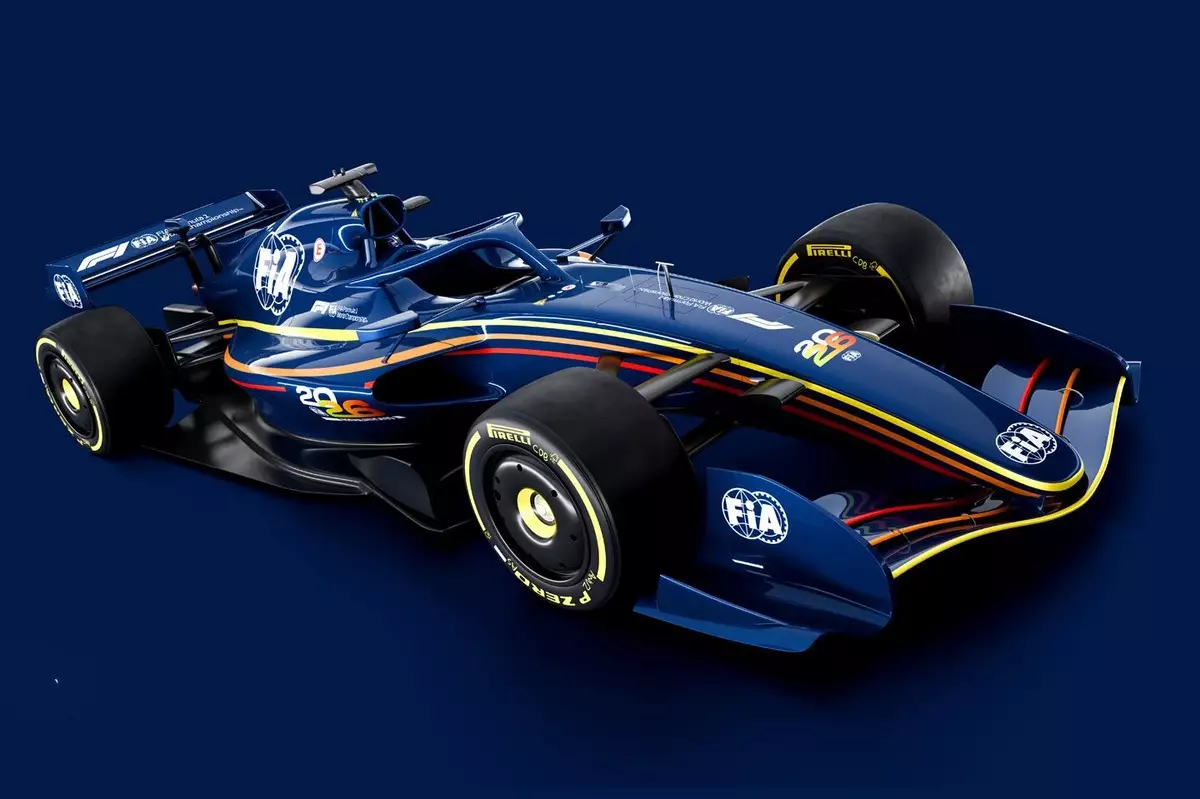Formula 1 stands on the brink of a transformative era, poised to reshape the very foundation of what fans, drivers, and teams have come to love about the sport. The upcoming regulatory overhaul, set for 2026, promises more than just technical tweaks; it signals a fundamental rethink of racing dynamics, aerodynamics, and competition strategies. This impending change fuels widespread debate within the paddock, highlighting both enthusiasm and skepticism about what the future holds.
The crux of the matter lies in the new cars’ performance profile. Unlike previous seasons, these vehicles are designed to excel on straights but falter slightly in corners, leading to a fascinating trade-off. Speeds on the straightaways are expected to surpass current models, thanks to reduced downforce and drag, promising blistering top-end speeds. Conversely, cornering becomes a more deliberate, slower process, effectively balancing the overall lap time. While some critics predict this might dilute the adrenaline rush, others see it as an evolution that could elevate racing to new strategic heights.
Yet, despite the technical shifts, FIA officials like Nikolas Tombazis assert that lap times are being overstated as a primary indicator of race quality. He suggests that our obsession with immediate lap delta figures often overshadows the deeper essence of racing — close, competitive action and driver skill. Historically, F1 has ebbed and flowed with car speeds, and Tombazis emphasizes that once enthusiasts and drivers acclimate to the new pace, the significance of lap timings diminishes. This perspective aims to shift the narrative from raw speed to racecraft, overtaking, and tactical nuance.
From a performance projection standpoint, simulations estimate the new cars will initially be between one and two-and-a-half seconds slower per lap when regulations come into effect. However, this is not expected to be a static figure. Continuous development, innovation, and adaptation will push these cars toward faster laps, narrowing the initial gap. Such ongoing evolution points toward a dynamic racing environment where performance isn’t fixed but rather an ongoing pursuit refined through technological innovation and team ingenuity.
Still, uncertainties linger. The FIA admits that data from all teams remains incomplete, and disparities in aerodynamic packages could lead to variable performance levels across the grid. Some teams might struggle initially with the new regulations, resulting in slower lap times than simulations suggest. Such unpredictability could introduce interesting strategic layers, as teams work to optimize their setups amid evolving regulations and emerging challenges.
What truly holds more value in this new chapter is the race itself — closely contested, unpredictable battles that keep spectators on the edge of their seats. The emphasis on close racing over sheer speed reflects a matured understanding of entertainment and sporting integrity. As Tombazis points out, making cars as slow as some lower-tier series would be unacceptable; the new regulations aim for a balance: exciting speeds coupled with competitive overtaking possibilities. This approach signals a strategic move away from raw acceleration metrics toward an appreciation of agility, tactics, and driver prowess.
The End of DRS and the Dawn of Active Aerodynamics
One of the boldest changes in 2026 is the phasing out of the traditional Drag Reduction System (DRS), once a staple tool for overtaking. Instead, the sport is experimenting with active aerodynamics and innovative boost modes designed to maintain overtaking opportunities without relying solely on rear wings. The introduction of “X-mode” and “Z-mode” configurations, coupled with a manual override boost, aims to offer a more nuanced, skill-dependent overtaking mechanism.
This new system resembles “push-to-pass” features found in other racing series, providing drivers with a temporary power surge to close gaps or defend positions. Unlike DRS, which could sometimes be an overused, simplistic solution, these active aero modes are supposed to be more strategic and less predictable. Their effectiveness hinges on finesse — knowing when to deploy them, managing stash and energy, and making split-second decisions that could determine race outcomes.
Feedback from driver simulators indicates that the magnitude of this boost will be carefully calibrated. The goal is to strike a sweet spot where overtakes require tactical effort but remain achievable, maintaining the challenge without turning overtaking into a mere button press. This change aims to deepen the complexity of racecraft, pushing drivers to make smarter, more calculated moves rather than relying on automated systems.
Moreover, removing DRS could lead to more authentic racing battles, emphasizing driver skill and the car’s inherent capabilities. It could also reduce the artificial “straight-line pass” feeling and encourage more strategic positioning throughout the lap — turning overtaking into a true test of bravery, timing, and technical finesse.
Shaping a Better Future for Formula 1
The new regulations represent more than just a technical reset; they symbolize a strategic step toward a more engaging, unpredictable, and skill-focused sport. Fans, drivers, and teams alike are tasked with re-learning how to perceive and appreciate racing. Rather than focusing narrowly on lap times, the emphasis shifts toward tactical fight, racecraft, and vehicle handling under new aerodynamic constraints.
There is an underlying optimism in the FIA’s approach: these changes can elevate the spectacle, diluting the dominance of certain teams and fostering more intense scrambles for position. The initial slowdown might be perceived as a setback but could, paradoxically, lead to more exciting races, emphasizing the human element over raw engineering.
However, it’s crucial to remain vigilant about the implementation process. The diverse performance levels across teams, potential technical teething issues, and the adaptive capability of drivers all play significant roles in shaping the success of this transition. If executed well, these reforms could redefine what F1 racing means in the coming years — not merely as a contest of who has the fastest car but as a genuine clash of skill, strategy, and innovation. That, at least, is the bold promise of the 2026 revolution.


Leave a Reply